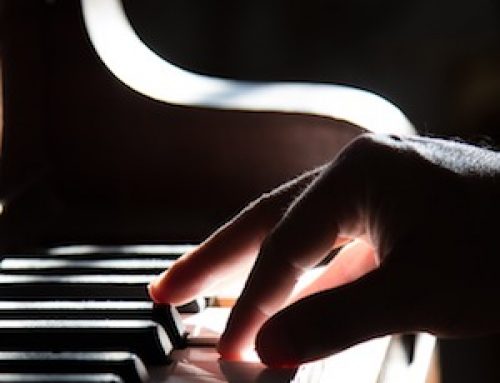Some of the most commonly asked questions about the piano are about what the pedals do. The most important tip about using pedals is to always press a pedal with your heel on the ground. Do not stand on them and put your full weight on them or you can break them.
Sustain Pedal or Damper Pedal (the one on the right)
The most commonly used pedal is the one on the right, called the damper pedal or the sustain pedal. When you press and hold this pedal down, the notes you play will continue to sound even after you let go of the key. It works by lifting the felts away from the strings so the strings continue to vibrate.
Soft Pedal or Una Corda Pedal (the one on the left)
The pedal on the left is usually a soft pedal or una corda pedal. When you press and hold this one down, it helps you play quietly and gives the piano a different tone quality. It works by shifting the action to only let the hammers hit some of the strings to make it more quiet. Remember this is more about softening the tone, not the volume, and many times makes the tone more mellow and less brilliant.
The Middle Pedal: Sostenuto Pedal OR Bass Sustain Pedal OR Practice Pedal
Many pianos have a third or middle pedal, which is different on different pianos. On some it is a sostenuto pedal which helps you to sustain a chord in one place while then continuing to play staccato in another place on the piano. It can actually make it sound like you have three hands! On other pianos, the middle pedal is a practice pedal putting a piece of felt in front of the pianos hammers to bring the volume of the piano almost down to a whisper. This pedal is convenient for practicing in an apartment or at 3 in the morning when others would not want to hear how dedicated you are to practicing! Many American-made vertical pianos have as their third pedal a bass sustain pedal. When you press this pedal, it lifts the dampers in the bass section of the piano but allows the treble to be able to play staccato. This is usually from the 2nd Bb below middle C and lower.
The Feel of The Pedals
Every piano has a different feel for pressing pedals. If you go to a friend’s house or church or school to play, this important to know. It is the piano player’s job to adjust to how hard or light to press any piano when you are playing one you have never played before. Press it a few times to feel how hard you will need to press it for it to sound properly, yet not get a “thunk”, usually by releasing the pedal too quickly. Remember that digital pianos and keyboard pedals are only “on or off” since they are essentially computers, and therefore you have less control for it’s sound.
Article © 2001 by Paul Nazzaro

